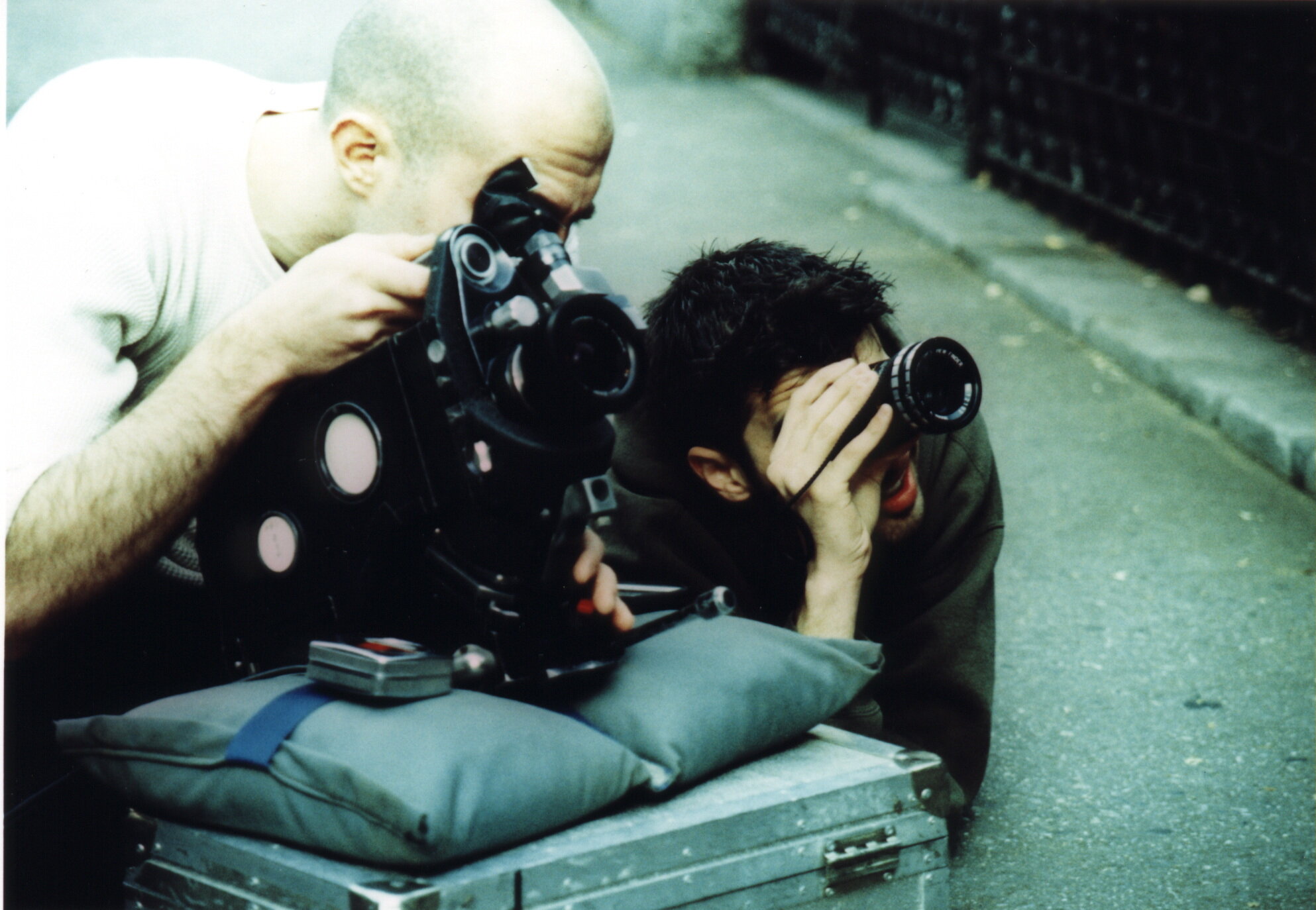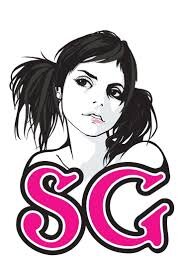
An award-winning and controversial urban thriller that has earned its maverick filmmakers both
accolades and condemnations for its heady brew of street philosophy and ultraviolence.
Made by The Kings Mob (directed/co-written Matt Pizzolo, produced/co-written Katie Nisa)
"The arts at their rawest, most entrenched level."
-Montreal Mirror
White straightedge hardcore kid Jim and black hip-hop radical Fred become friends working dead-end jobs in NYC's Lower East Side, both of them with the hope that their newfound brotherhood will bring solidarity to their disparate communities. Instead, the alliance triggers a violent race riot that spills into the city streets with devastatingly tragic consequences.
Produced completely independently, financed on dubiously procured credit cards and shot on 16mm “short ends” discarded by professional film shoots, Threat was made in NYC, Brooklyn, and Long Island from 1997-1999 (“the last days of Old New York”).
Pizzolo was 19 years old and living out of a backpack in NYC’s Lower East Side when he wrote the first draft of the script. Soon after, he and filmmaking partner Katie Nisa formed Kings Mob Productions, a volunteer crew in their teens and early 20s who learned movie production as they went.
Though Pizzolo directed, the Kings Mob was structured as a creative collective of young artists who collaborated on every step of the process—in fact, several of the actors even composed in-character songs for the soundtrack and score.
When the film was completed, they didn’t know what to do with it—so they piled into a van and drove to the Sundance Film Festival… without an invitation.
They sent out an email blast of their route to Park City, offering to play the film for anybody who let them crash along the way. In a dozen towns between NY and Utah, local kids presented screenings of Threat in skateparks, hip hop clubs, record shops, and their parents’ basements. Turnout ranged from 2 to 200 depending on each kid’s ingenuity. After each screening, Pizzolo and Katie ran DiY filmmaking workshops.
When they finally reached Sundance, it was not the open-armed mecca of indie filmmaking they’d imagined—but they’d learned a thing or two about movie screenings on the drive over.
Turned out, there was a Doc Martens shoe store across the street from Sundance’s flagship Egyptian Theater on Main Street. The shoe store clerks convinced their bosses to let the Kings Mob take it over for four screenings over two nights. And WalMart’s 30-days-no-questions-asked return policy provided the TVs for the video installation.
Threat sold out all four shows, and, though it didn’t attract the proverbial Sundance distributors of legend (one Miramax exec joked that Harvey wouldn’t like the scene where the young woman attacks her abuser), journalists noticed the lines of eager skaters and snowboarders waiting to see the film.
A cover story in London’s Daily Telegraph Saturday Magazine led to a European tour for the film, followed by a stint screening it on the Van’s Warped Tour.
When traditional distributors finally came knocking, Threat had already found its audience on its own and the Kings Mob made a deal to form their own indie distribution studio Halo-8 rather than selling the film.
"In the spirit of SUBURBIA, Penelope Spheeris' 1984 dramatization of LA's squatter punks, THREAT ignores sensationalistic commentary on youth culture with its aggressively DiY approach focusing on issues of race, gender and class articulated by the people it's written about. THREAT is a refreshing movie, unafraid to be awkward and honest about the multicultural urban experience of intelligent young adults who are pissed about being placed at the end of the food chain."
"Fierce emotions have yielded a fervid film called THREAT. The film shows what adults portraying kids never seem to be able to portray: their complexity. THREAT's triumph is that it avoids scenester naivete. Every subculture is interrogated equally by the poetic script - black, white, straightedge, drinker, gangster, city kid, suburban kid - which turns the film into a whirling meditation on youth, city, and future."
"Visionary director Matt Pizzolo takes a harsh look at what it means to be a disaffected youth, showing that the promised land of opportunity and the American dream are relics of the past. Although it may sound akin to similar independent films (think KIDS), THREAT is unique in that violence is portrayed to a degree that would make even the most iron-stomached viewer wince."
“Even though a majority of Americans are tolerant of other races, religions, sexual orientations, and other lifestyle differences to at least live on a day-to-day basis without confrontation, there is still an ever-present fire underneath threatening to bring things to a boil. Tackling this idea head on is an indie film called Threat. The brainchild of Matt Pizzolo and Katie Nisa, Threat addresses the idea of what might happen when all the anger and frustration of today’s youth comes bubbling to the surface on the streets of New York City – an idea that is just as politically incorrect and hard to acknowledge as the intolerance and hatred that could potentially ignite such a fire.”
“Matt Pizzolo shook up Hollywood with his indie movie Threat and the guerrilla tactics he used to produce and distribute it. A defiant and confrontational movie about class war and unbridled youth violence, Threat is not exactly the type of film you might expect to earn its writer-director a multi-picture deal with Sony, but that's exactly what Pizzolo managed to accomplish along with his filmmaking partner Katie Nisa and their Kings Mob multimedia militia. With Threat tearing it up in theaters, I decided to catch up with Pizzolo and figure out what he's so angry about.”
“Life and conflict in the streets... we've seen movies struggle their way through this topic before, and not one of them comes minutely close to capturing the brutal complexity and misdirected violence the lifestyle offers as raw and as candid as Threat has.
From the first scene in the opening series- the extreme camera angles, fast paced and elegantly written dialogue- and the outlandish actions of the characters, we know what we are to expect: An honest, unedited (as most Hollywood films [see: censorship] aren't) depiction of kids in the streets.”
“A very confrontational movie about the disadvantaged and disaffected punk rock and hip hop tribes after their consciousness gets raised.”
“Threat rocked its way across the US and Europe… definitely among NY’s hardest, the Kings Mob is re-inventing indie film for punkers and hip hop heads worldwide.”
“Threat surprised the uninitiated last night during the Sundance Film Festival when it sold out both of its independent screenings during the very competitive nighttime hours out there on Main Street.”
“Threat is a DiY movie about kids coming of age in a world of violence and intolerance, recognizing too late that the establishment pits us against one another across lines of race, gender, and privilege. The movie was a four year collaboration between over 200 kids from numerous cultures and lifestyles across five countries. Production was based largely on Kings Mob’s technological innovations. For example, during post production back in 1998, Threat became the first movie whose score was constructed via international MP3 transfer.”
“Important.
Special and different from everything else out there.”
”What makes Threat so compelling are the ways in which the film simmers to a full boil. Many of its characters are driven by deep frustration, and while some of their actions may seem questionable on the surface, it's also difficult to outright condemn them.
That undercurrent of tension reaches a bloody climax later in the film, when racial violence erupts at a hardcore show on the Lower East Side (filmed at venerable NYC club The Wetlands, which has since closed its doors), spilling out into the streets. In an instant, the film's debate turns from intellectual to visceral, serving as a nightmarish vision of where such conflict can lead.”



























































































